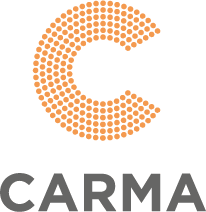Last week I participated in the diversity panel debate at #PRFest which was chaired by CIPR President-Elect, Sarah Hall, where I represented gender diversity on behalf of Women in PR, in a debate which also covered BAME, LGBT and social mobility.
However, after two and half years’ as President of Women in PR and numerous panel debates, I took the decision the night before that I wasn’t going to talk about female representation in the boardroom, the gender pay gap or flexible working, as I wanted to move the conversation on, or back, to focus on the causes of gender inequality in the PR industry.
On the face of it, women have never had it so good, with 64% of the industry made up of women. However, according to the 2016 PRCA PR Census, this statistic is reversed at board level with 64% of senior roles, held by men.
Earlier this year, Women in PR and the CIPR undertook a small but important piece of research which examined the reasons for PR and Pay Inequality. Eight reasons were identified with unconscious bias sitting at the heart of them all, including fear and stigma, sector bias, lack of transparency and attitudes to senior alpha females.
During the #PRFest debate, Ella Minty quoted me as saying, “Unconscious bias is the biggest cause of lack of diversity in PR.” You know when you’re at a tipping point on an issue when multiple people mention it or you frequently read about it in a short space of time, and I think we are at a tipping point with unconscious bias.
When I told Sarah Hall I was changing the topic I was covering at the panel debate, just two hours beforehand, she took it in her stride and was delighted that I’d picked unconscious bias, saying she was discussing it only recently with the board of one of her clients.
Only a few weeks ago, I was having coffee with a male, agency CEO, who told me he was fed up with the comments being made by his male direct reports to female colleagues that he believed were rooted in unconscious bias. He kept having to take them aside to “have a word.”
At this year’s Cannes Lions Festival of Creativity, Wendy Clark, president and CEO of DDB North America and chair of the Glass Lion jury, revealed that DDB had implemented unconscious bias training for all 2,000 associates in North America in order to address bias in their workplace.
If we can address the causes of a lack of diversity in the PR industry and start to address unconscious bias by holding a mirror up to ourselves, we will end situations where women face unconscious bias at work on an almost daily basis – where a former employee was called a “Princess” by her male colleagues because she dared to ask for a pay rise; where a former colleague was negotiating an international transfer and was told, “judging by the size of your ring, you don’t need an increase,” the inference being that her two carat diamond engagement ring meant her husband was wealthy enough for her not to need to earn a high salary, or in fact, work at all. I could go on.
So, for the remaining seven months of my Presidency of Women in PR, while I’ll still be addressing female representation in the boardroom, the gender pay gap and flexible working, I’ll be focusing on moving the conversation on and talking about unconscious bias.
Anyone can test their own unconscious bias for free using the Harvard Implicit Association Test (IAT).




